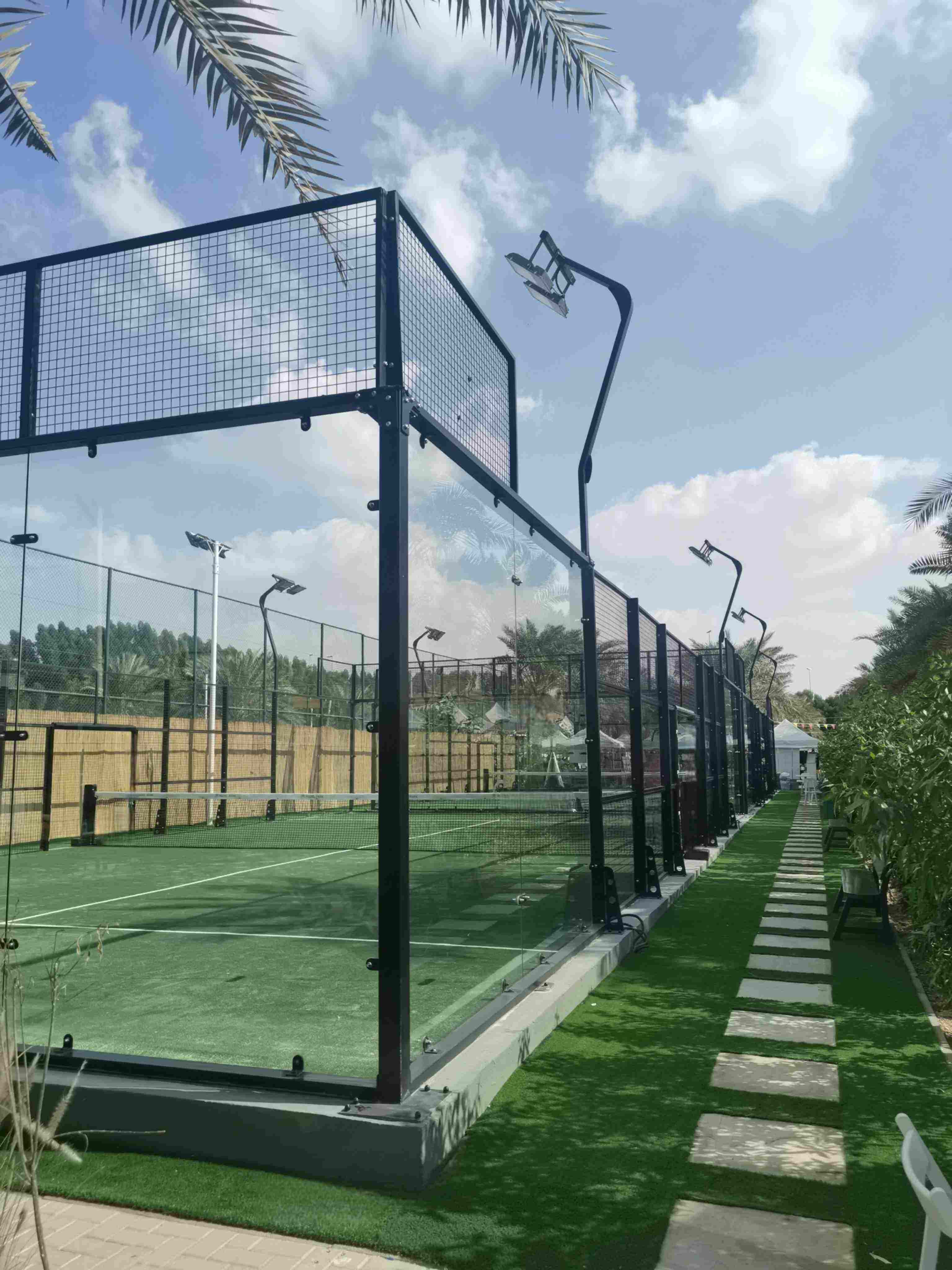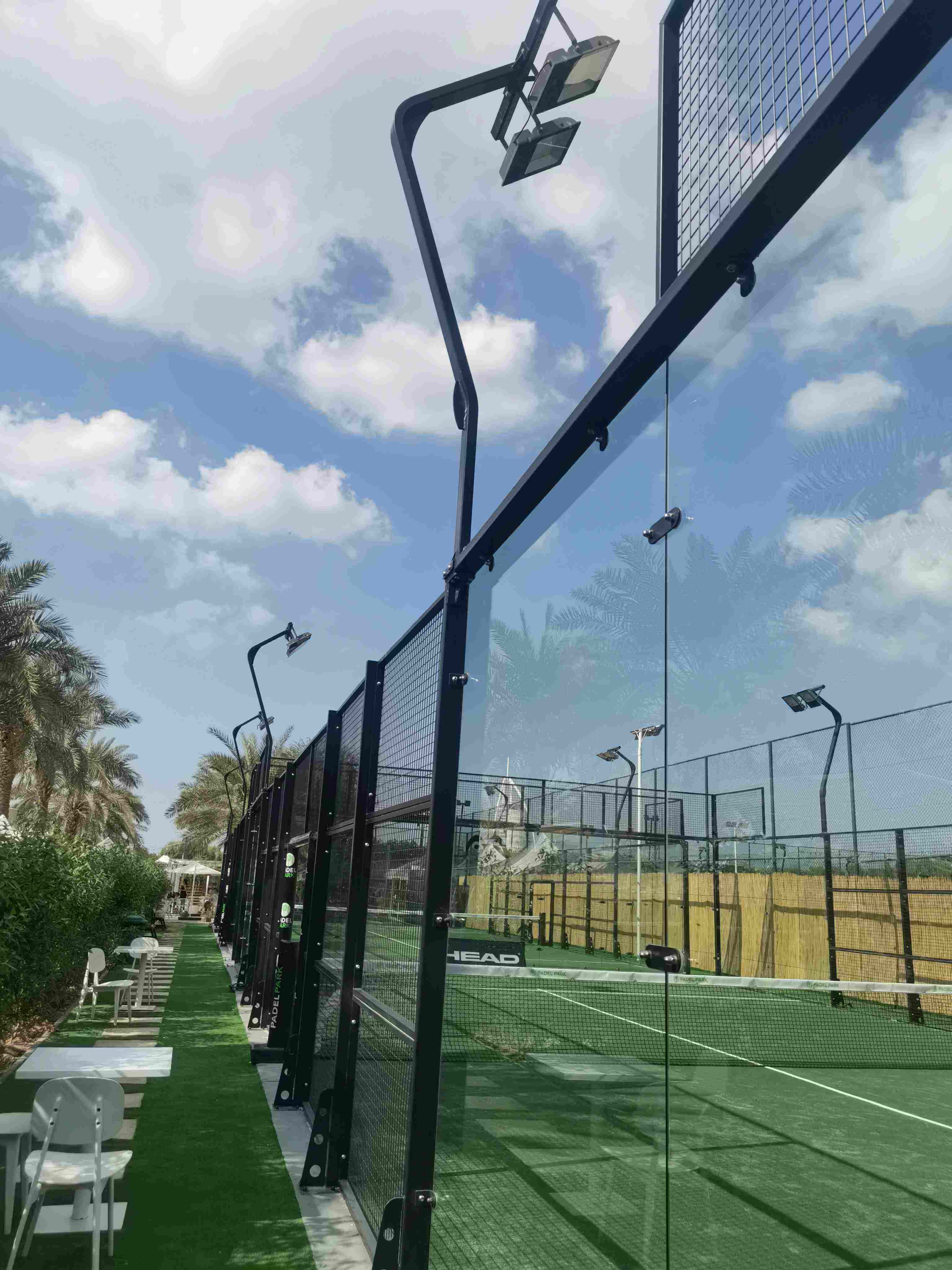No reino das instalações de quadras de padel, a iluminação se tornou um ponto focal. A iluminação esportiva moderna não é mais apenas sobre iluminar o campo de jogo — é sobre otimizar o desempenho do atleta e melhorar a experiência do espectador. À medida que a indústria avança em direção a soluções mais sustentáveis e eficientes, a iluminação esportiva LED se tornou a tendência líder. No entanto, o processo da seleção à instalação não é isento de desafios.
Abaixo está a pesquisa mais recente do SSTD PADEL sobre as principais considerações na iluminação de quadras de padel.
Como avaliar as necessidades de iluminação de quadras de padel?
“Quando nos encontramos pela primeira vez com um cliente, focamos em entender seus níveis de iluminação atuais e o que eles esperam da atualização. Embora existam padrões da indústria definindo níveis de iluminação apropriados, esses padrões podem nem sempre se alinhar às necessidades específicas. Portanto, nossas discussões iniciais geralmente giram em torno de: ‘Quais são seus custos atuais de manutenção? Quais são suas metas de melhoria?’ Com essas informações, projetamos várias opções, que vão desde soluções de ponta até conversões simples de LED para economia de energia.”
“Esportes diferentes têm requisitos de iluminação distintos. Por exemplo, no tênis, prestamos muita atenção ao brilho, ao posicionamento, direção, altura e brilho das luzes, pois os jogadores geralmente olham para cima, especialmente durante os saques. No beisebol, a iluminação para cima é crucial para garantir que a bola seja visível quando está alta no ar. Eu mesmo joguei beisebol, então entendo o quão desafiador pode ser se certas áreas do campo forem mal iluminadas. Embora o brilho seja menos crítico em quadras de padel, garantir uma iluminação uniforme continua sendo essencial.”
“Antes de começar qualquer projeto de iluminação esportiva, entender o nível do jogo é o passo mais importante. Diferentes níveis de competição exigem diferentes padrões de iluminação. Instalações recreativas geralmente precisam de níveis de luz mais baixos do que escolas de ensino médio, faculdades ou locais profissionais. Se você estiver reformando uma instalação existente, também é importante avaliar a infraestrutura atual — como postes ou sistemas de controle — para determinar se eles podem ser reutilizados. Reutilizar a infraestrutura existente pode reduzir significativamente os custos do projeto.”
Como definir um orçamento realista para projetos de iluminação esportiva de LED?
“Criar um orçamento realista é essencial para garantir o sucesso de qualquer projeto de iluminação esportiva. É essencial analisar completamente as necessidades do projeto e o processo de implementação. Isso inclui considerar os requisitos para postes, a densidade dos equipamentos de iluminação e os sistemas de controle. Garantir que o orçamento esteja alinhado com as metas específicas do projeto é essencial para atingir resultados de iluminação ideais.”
“Um dos maiores fatores de custo é se deve ou não usar postes existentes. Isso pode ser uma despesa significativa. Às vezes, os clientes preferem manter postes antigos, mas eles podem estar no local há 60 anos, apresentando riscos estruturais. Portanto, o primeiro passo é sempre avaliar a segurança dos postes existentes.”

O que priorizar ao selecionar um fornecedor de iluminação esportiva?
“A qualidade deve ser sempre a principal prioridade. Ao selecionar um fornecedor, é essencial pesquisar minuciosamente sua tecnologia, experiência e reputação no mercado. Optar por produtos mais baratos com baixa qualidade geralmente leva a problemas de desempenho e pode se tornar um erro caro. É crucial garantir que o fornecedor ofereça serviço e suporte profissional durante todo o ciclo de vida do projeto.”
Como obter iluminação uniforme e minimizar o brilho no design?
“Uniformidade é essencial no design de iluminação. Aumentar o número de luminárias pode reduzir pontos de luz e sombras, garantindo iluminação uniforme em toda a área de jogo. Um design de alta qualidade garante que todas as áreas sejam bem iluminadas, evitando iluminação irregular.”
“Realizamos simulações fotométricas 3D para garantir que os níveis de iluminação atendam aos padrões exigidos. Uma vez concluída a instalação, usamos medidores de luz no local para medir os níveis de luz em vários pontos, garantindo que o projeto atenda às expectativas do cliente.”

Como integrar recursos de economia de energia, como escurecimento e sensores?
“Sistemas avançados de controle de iluminação podem ajustar a iluminação de acordo com a forma como a instalação está sendo usada. Por exemplo, durante as sessões de prática, as luzes podem ser reduzidas para 50% de brilho. Sensores de movimento e recursos de coleta de luz natural podem evitar ainda mais o consumo desnecessário de energia.”
Conclusão
Ao planejar e projetar iluminação LED para quadras de padel, prestar atenção aos detalhes e entender os requisitos específicos do projeto são essenciais. Uma equipe profissional de iluminação pode antecipar e abordar potenciais desafios, garantindo uma execução suave do projeto.
Para aqueles que estão considerando um projeto de quadra de padel, os insights desta discussão são inestimáveis. Escolher um parceiro com experiência em planejamento e design é crucial para alcançar uma instalação de iluminação esportiva LED perfeita. A SSTD PADEL estabelecerá uma base sólida para fornecer iluminação de alta qualidade para atletas e espectadores nos próximos anos.